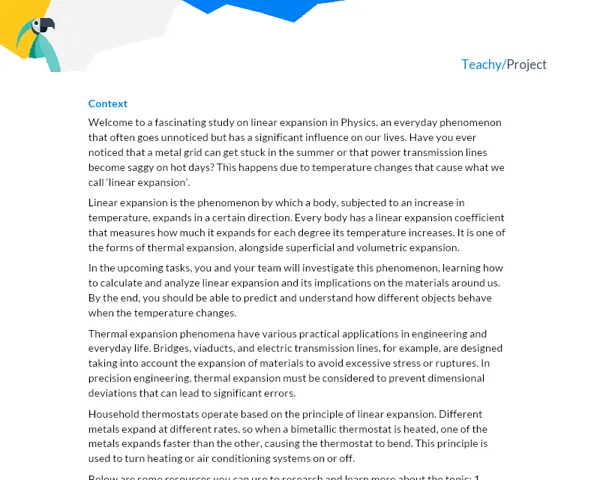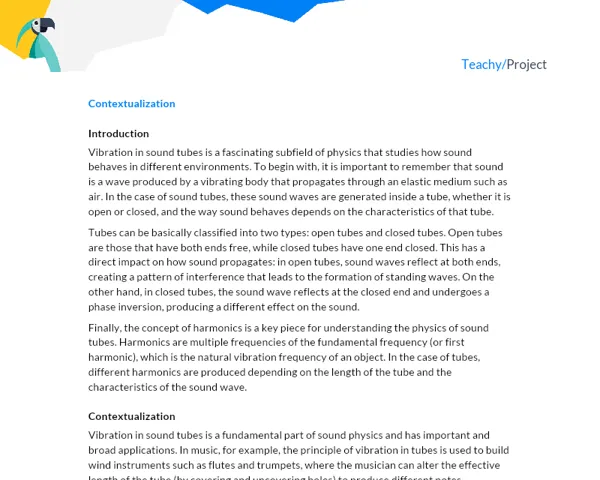Context
Newton's third law, also known as the Action-Reaction Principle, is one of the fundamental pillars of Physics, with practical and theoretical applications in virtually all areas of science. This principle states that for every action, there is always an equal and opposite reaction. This means that forces always occur in pairs: if body A exerts a force on body B, body B exerts an equal but opposite force on body A.
We can see the application of Newton's third law in many aspects of our daily lives. When you push against a wall, your hand exerts a force on the wall. According to Newton's third law, the wall is exerting an equal and opposite force on your hand. That's why you can feel the wall pushing back against your force.
Newton's third law is much more than just a scientific principle. It is a way to understand how the world works. Without Newton's third law, we would be unable to explain why a rocket takes off from the ground, how birds fly, or even why we are able to walk. It helps us understand how forces interact and how these interactions affect the motion of objects.
Practical Activity: "Unraveling Newton's 3rd Law with Soapbox Cars"
Project Objective
The purpose of the project is to allow students to experience in practice the functioning of Newton's third law, through experiments, reflections, and debates. The proposal is for them to observe, analyze, and record what happens when Newton's third law is applied in practice, through a soapbox car.
Detailed Project Description
Each group of 3 to 5 students will be responsible for manufacturing and testing a soapbox car. They will design, build, and test the car, observing and reporting how Newton's third law applies at each stage of the project.
Required Materials:
- Soapbox cars
- Wood for car construction
- Assembly tools (hammer, nails, saw)
- Scale
- Tape measure
- Camera or cell phone to record the experiment
- Notebook
Step-by-Step Guide for Project Execution:
-
The group must first design a project of how the soapbox car will be, taking into account its weight and the forces that will act on it.
-
Collect the necessary materials and build the soapbox car.
-
Test the soapbox car on a flat surface and then on a slope. Record what happens in each situation (using the cell phone, for example).
-
Analyze and discuss the results: what forces act on the soapbox car? How does Newton's third law apply in this context?
-
Write a report on the project, including the conclusions obtained.
Project Deliverables
Students must deliver:
- The soapbox car built by them.
- A report on the project, consisting of four parts: Introduction, Development, Conclusions, and Bibliography.
In the report, in the introduction section, students must contextualize Newton's third law, its relevance and applications in everyday life, as well as the project's objective.
In the development section, they must explain the theory of Newton's third law, detail how they built the soapbox car and how they conducted the tests. What were the results obtained? How do these results relate to Newton's third law?
In the conclusions, students must summarize the main points of the report and explain what they have learned. What conclusions can they draw from their experience with the project?
And finally, in the bibliography, students must list the sources they used to work on the project, such as books, web pages, videos, etc.
This project will allow students to see Newton's third law in action, while developing important skills such as time management, communication, problem-solving, creative thinking, and proactivity.


